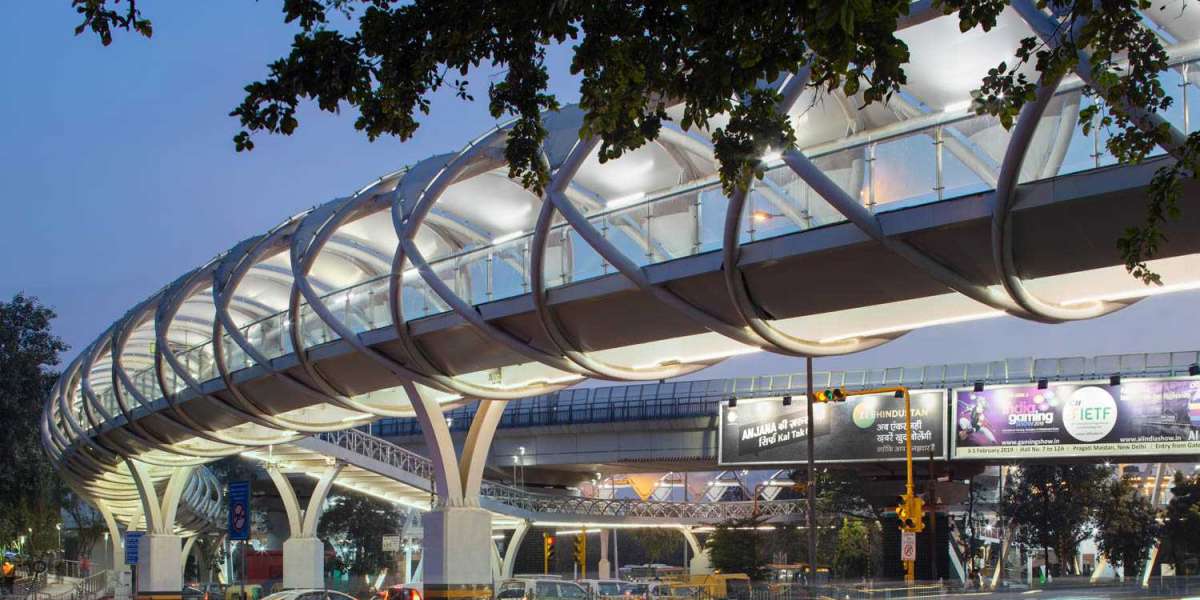As the nation grows by leaps and bounds, new roads are constructed, and existing ones widened to accommodate the motorist. The encroachment of roads into pavements has shoved the pedestrian into the fringes, marginalizing him into shrinking corners, with not enough space to walk. Delhi is notorious for its blatant disregard for pedestrian traffic, seen struggling day-to-day navigating dangerously amidst rows of speeding cars.
Pedestrian over-bridges and subways offer little respite, often due to unsuitable location, poor quality of design, and/or lack of maintenance. The infrastructure becomes redundant and more of a menace than anything else. Pedestrians tend to hit the roads, squeezing past grilled dividers and fences, risking their lives to save a little time and effort. Unless lifts, escalators, and ramps function as envisioned, there is little meaning left in the use of over-bridges. In cities like Mumbai, weakened over-bridges crumbled, resulting in disgraceful accidents, ones that were waiting to happen under ignorance and apathy.
The city, though in recent times, has managed to successfully install and operate a number of skywalks — a popular term for pedestrian foot over-bridges and elevated walkways that transport pedestrians daily above a sea of unimpeded traffic. DFI secured the opportunity to connect four principal streets at the infamous ITO intersection in Central Delhi, where no effective strategy was in place for the flood of commuters witnessed crossing the streets during rush hour.
Infrastructure projects underpin DFI’s nation-building endeavor on the lines of urban design, where safety, walkability, and sustainability govern the execution process. Though the project encompasses all parameters of public safety and facilitates urban mobility efficiently, the ITO Skywalk was designed to not just as a symbol of utility but also — through its sinuous profile and compelling aesthetic — establish itself as a landmark within the city.
The design for skywalks needs to be more pedestrian-centric than ever thought of before. Architects, planners, and policymakers cannot afford to neglect or make uninformed choices about the future of pedestrian mobility. In light of unfortunate incidents, the clarion call for meaningful spaces that promote walkability has been sounded. Skywalks are one of the many different approaches to tackle this problem. You are welcome to share more.
Photograph by: Andre J. Fanthome
Design Forum International is a young-old organization with almost 25 years of experience that has quickly set the right foot to be one of the best architecture firms in India. The firm is a vibrant mix of young and experienced professionals bounded by a common thread: the passion to design. An active contributor to the Nation Building drive and the Indian infrastructural boom, DFI holds vast industry experience in both national and international projects with millions of square feet of construction in a varied range of typology like Affordable Housing, Master planning, Mixed use Retail, Institutional as well as Healthcare. Some of DFI’s notable projects include the famous Select Citywalk mall, and the recently inaugurated New Courts Block of Delhi High Court., the ITO Skywalk, Delhi and the Dakshineshwar Skywalk in Kolkata. The Guwahati International Airport in Assam, designed by DFI is also under completion and is scheduled for completion in 2021.





